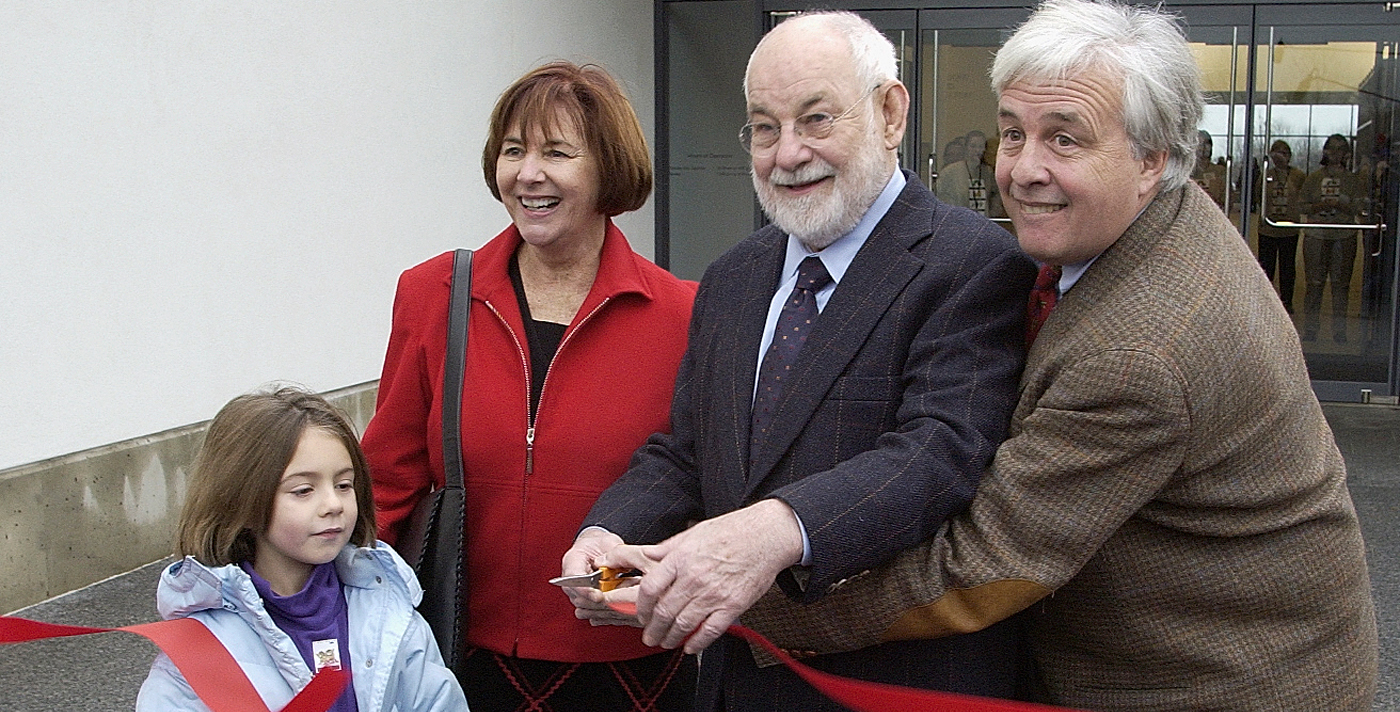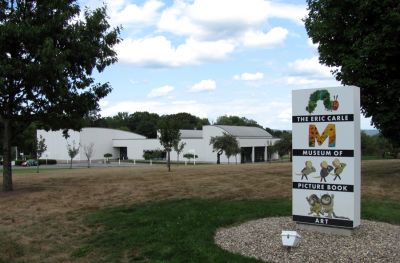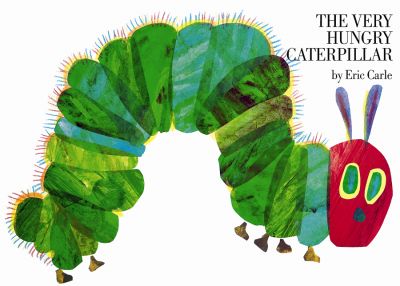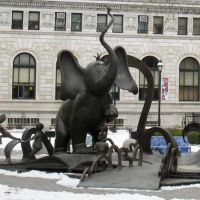Primary Source
“The Very Playful Museum Conceived by Author/Artist Eric Carle, A New Site Illustrates the Fun of Learning,” by Jack Thomas.
A visitor enters a grand lobby that features 20-foot windows and four stunning works of art by Carle, each 8 feet by 16, in vivid red, green, blue, and yellow against white walls.
"What Eric was envisioning," says Clark, "is that you are walking into one of his books."
Designed by longtime friend and principal architect Earl Pope, the museum was set in the orchard and designed in an exterior of white stucco to reflect Carle's reputation for white pages contrasted with bright collages that depict the natural world.
"People may think, oh, a museum for picture-book art - it must be a children's museum," says Clark. "Now, children's museums perform an important function in introducing children to pre-choice learning in an institutional environment, but we are the next step. There are a lot of children intimidated by museums and art, and that's what we want to soften. My mission is to assure people that they can't flunk museumgoing."
Unlike many museums designed in part for children, the Carle museum is free of electronic honky-tonk.
"A picture book is interactive," says Carle, "and our art studio, but interaction where you push something electronic? No. I like books, the feel, the smell."
Clark agrees.
"So much of life already deals with electronic interaction," he says, "but if we can take people back to basics and help them realize there are things that can be done with eyes and hands that are not electronic and yet meaning ful, then perhaps we can help make other experiences more powerful."
Boston Globe, November 16, 2002.








